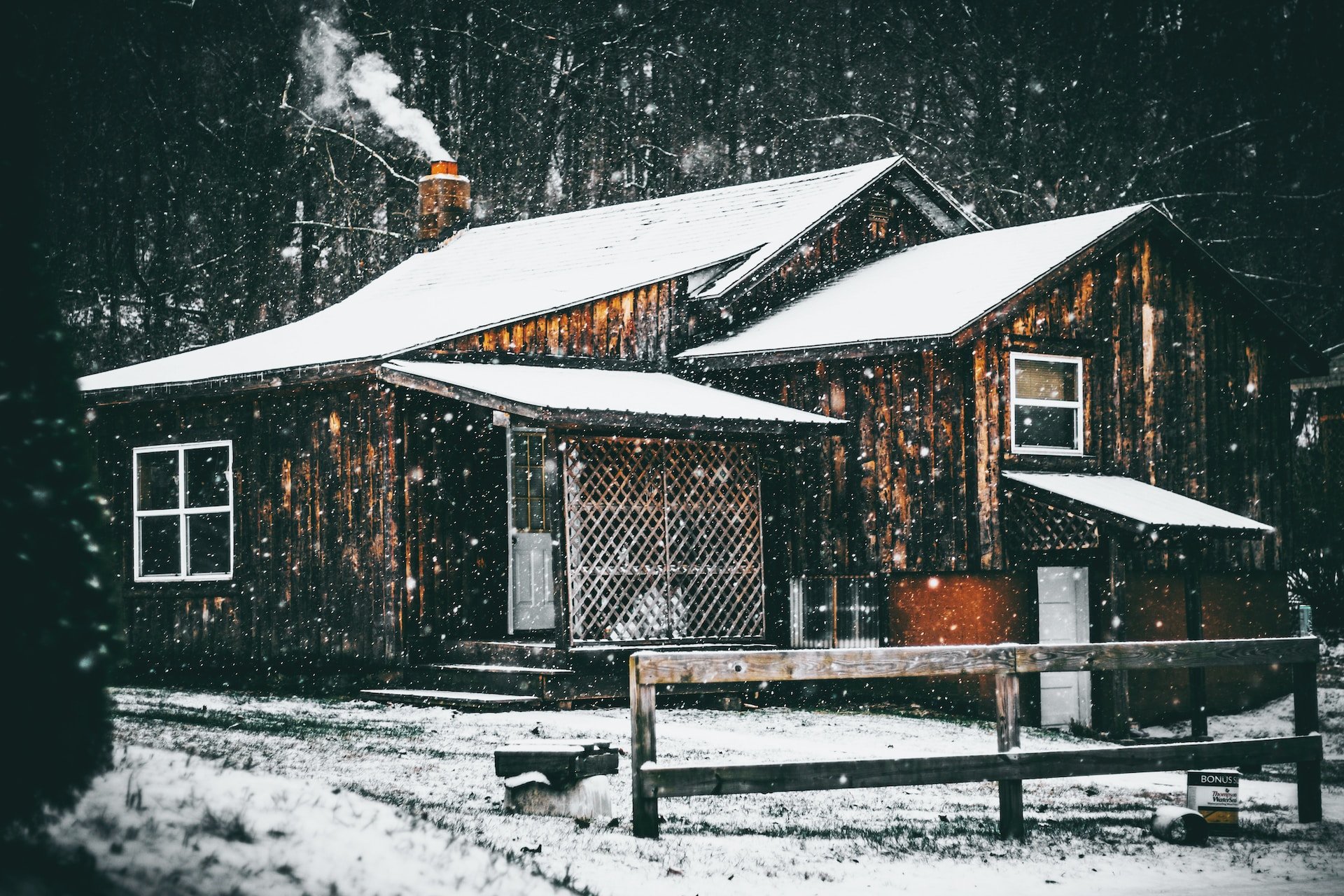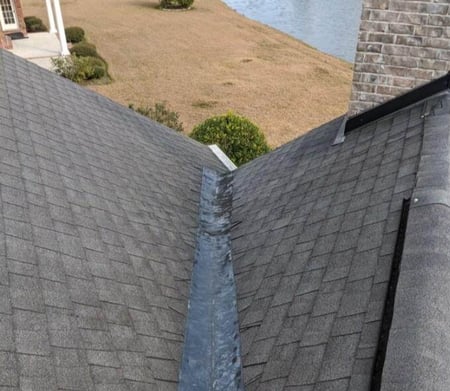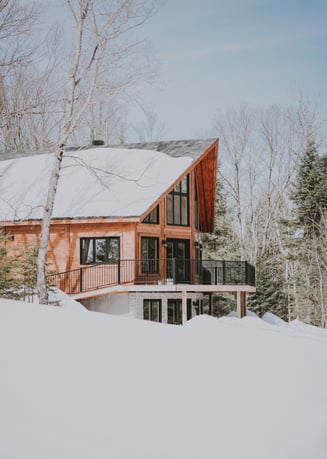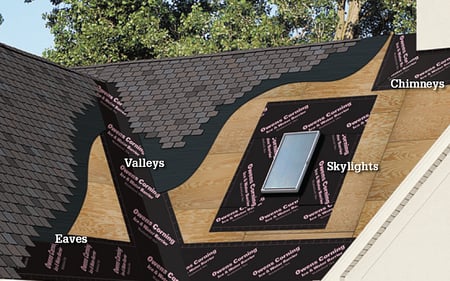Ice and Water Shield: What is it & How Does it Work?
October , 2023 | 5 min. read

Ice and water shields are an essential component of roofing systems, particularly in regions where harsh weather conditions like heavy rain, sleet, and snow can pose a threat to your roof. These specialized roofing membranes play a critical role in protecting homes from water infiltration, particularly in situations where ice dams, rain, or other sources of moisture might compromise the roof's integrity.
At RoofCrafters, we specialize in roof repairs, replacements, and weather protection, and while we operate in the Southeast where the climate tends to be a little more forgiving towards homeowners, we understand the importance of ice and water shields for those of you living in regions where the wind hurts your face, and snowmen don’t melt until May.
So, whether you're a homeowner who has a few questions, or simply interested in understanding the key elements of roofing construction, this article will shed light on the significance and practical applications of ice and water shields in maintaining a dry and secure living environment. In just a few short moments, you’ll learn what an ice and water shield is, its purpose, and how it works. Let’s get started!
What Is an Ice and Water Shield?
An ice and water shield, also known as an ice and water barrier, is a crucial component of roofing systems in regions prone to ice dams and heavy snowfall. It is a self-adhesive, rubberized asphalt membrane installed on the roof deck, typically in the areas most vulnerable to water infiltration, such as along eaves, valleys, and around roof penetrations like chimneys and vents.
What Is the Purpose of an Ice and Water Shield?
The primary purpose of an ice and water shield is to provide an additional layer of protection against water penetration caused by ice dams and melting snow. Here's how it serves your roof:
Preventing ice dams: In cold climates, when heat from the interior of a home escapes through the roof, it can melt the snow on the roof's surface. As this melted snow runs down the roof, it can refreeze at the eaves, forming ice dams. Ice and water shields create a watertight barrier that prevents water from seeping under the shingles or other roofing materials when ice dams form.
Sealing around roof penetrations: These membranes are also used around roof penetrations, such as chimneys, skylights, and vents, to create a watertight seal and prevent leaks at these vulnerable points.
Protecting valleys: Valleys, where two roof slopes meet, are susceptible to water runoff. Ice and water shields are commonly used in these areas to protect against water infiltration and potential leaks.

Ice and water shields are typically applied directly to the roof deck before the roofing material (such as shingles or metal roofing) is installed. They have a sticky backing that adheres to the roof deck, creating a waterproof barrier. Proper installation is crucial to ensure their effectiveness, and they should be applied according to the manufacturer's guidelines.
While ice and water shields are a valuable addition to roofing systems in cold climates, they are not a substitute for other roofing materials like underlayment and shingles. Rather, they complement these materials to provide extra protection against water infiltration and potential roof damage caused by ice and snow.
How Does it Work?

Ice and water shields are designed to provide a watertight barrier on a roof to prevent water infiltration in areas prone to ice dams, heavy rain, or other sources of water penetration. They work by creating a protective layer that seals vulnerable parts of the roof and ensures that water cannot penetrate through to the underlying structure. Here's how ice and water shields work:
Material Composition: Ice and water shields are typically made of a rubberized asphalt or synthetic material that is both flexible and adhesive. This material has a self-adhesive backing covered with a peel-off release paper.
Installation: The ice and water shield is installed directly onto the roof deck, typically in specific areas that are most susceptible to water infiltration. These areas often include:
- Eaves: The lower edge of the roof, especially where ice dams may form.
- Valleys: The areas where two roof slopes meet, forming a "V" shape that can channel water.
- Around Roof Penetrations: Such as chimneys, skylights, vents, and plumbing stacks.
- Roof-to-Wall Transitions: Where the roof meets a vertical wall, like a dormer or sidewall.
- Self-Adhesive Bond: Once the release paper is removed, the self-adhesive backing of the ice and water shield adheres directly to the roof deck. This creates an instant, waterproof seal.
Overlapping Layers: Ice and water shields are typically installed in overlapping layers, with each row or strip overlapping the previous one. This ensures that there are no gaps for water to penetrate.
Sealing Vulnerable Areas: In areas like valleys and around roof penetrations, the ice and water shield forms a protective barrier that prevents water from getting beneath the roofing materials, such as shingles or metal panels.
Secondary Water Barrier: Ice and water shields act as secondary water barriers, providing an extra layer of protection in case water manages to get past the primary roofing materials.
Durable and Long-Lasting: These shields are designed to withstand temperature fluctuations, UV exposure, and weather conditions over time without degrading or losing their effectiveness.
Compatibility: Ice and water shields are compatible with various roofing materials, such as asphalt shingles, metal roofing, or cedar shakes, making them versatile for different roofing applications.
Should I Invest in an Ice and Water Shield for My Roof?
As you now know, ice and water shields are a crucial component of roofing systems designed to provide protection against water infiltration in areas prone to ice dams, heavy rainfall, or other sources of water penetration. These self-adhesive, rubberized asphalt or synthetic membranes create a watertight barrier on the roof deck, sealing vulnerable areas such as eaves, valleys, roof penetrations, and roof-to-wall transitions.
By preventing water from getting beneath the primary roofing materials, ice and water shields act as a secondary water barrier, adding an extra layer of protection against potential leaks and water damage. Their durability and compatibility with various roofing materials make them a valuable tool for safeguarding homes and structures from the damaging effects of moisture, ensuring the longevity and integrity of the roofing system.
While their necessity varies with climate and local conditions, ice and water shields are an essential consideration for homeowners and roofing professionals in regions where water infiltration is a concern. If you’re interested in learning more about the weather protection options available to you, be sure to hit the “Schedule an Inspection” button, and allow RoofCrafters to walk you through the process!
My name is Cassie, and I’m the Content Manager here at RoofCrafters. I was born and raised in Chicago, Illinois, and made my way out to Florida post-college graduation. I’m incredibly passionate about writing and creating valuable content that helps others with the collaboration of my marketing team. When I’m not working, I enjoy shopping (a little too much), spending time at the beach, and reading!




